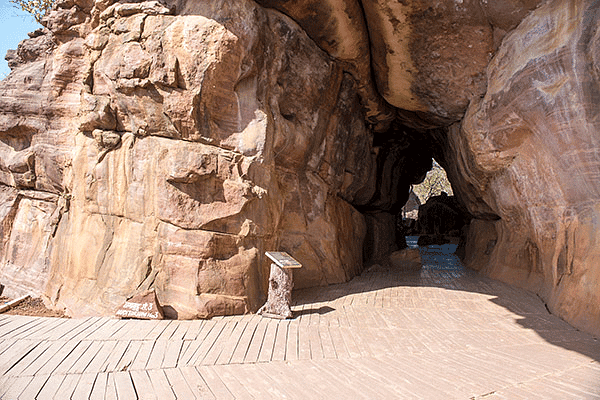Humanities/Arts Exam > Humanities/Arts Notes > Fine Art for Class 11 > Important Points: Prehistoric Rock Paintings
Important Points: Prehistoric Rock Paintings | Fine Art for Class 11 - Humanities/Arts PDF Download
1. Definition of Prehistory:
- The period before the advent of writing and documentation, often referred to as prehistoric times, is studied through physical artifacts and cave drawings.
2. Significance of Rock Paintings:
- Rock paintings offer insights into the lives and thoughts of prehistoric people, including their daily activities, artistic expressions, and spiritual beliefs.
3. Discovery of Rock Paintings in India:
- The first discovery of rock paintings in India was made in 1867–68 by Archibold Carlleyle, predating the famous Altamira cave paintings in Spain.
- Key sites with prehistoric rock paintings in India include Madhya Pradesh, Uttar Pradesh, Andhra Pradesh, Karnataka, Bihar, and the Kumaon hills in Uttarakhand.
4. Bhimbetka Rock Shelters:
- Located in the Vindhya hills of Madhya Pradesh, Bhimbetka is one of the largest and most significant prehistoric rock art sites in India.
- Discovered by V.S. Wakankar in 1957–58, Bhimbetka contains around 800 rock shelters with 500 featuring paintings.

5. Periods of Rock Art:
- The rock art at Bhimbetka is classified into seven periods, with the first three being the Upper Palaeolithic, Mesolithic, and Chalcolithic periods.
6. Themes and Subjects:
- Paintings from the Upper Palaeolithic period feature large animals like bisons, elephants, and tigers, often depicted in red and green colors.
- Mesolithic period paintings are smaller in size, often depicting group hunting scenes, community dances, and daily activities. This period also shows a variety of animals in a naturalistic style.
7. Materials and Techniques:
- The prehistoric artists used natural materials like haematite (geru) for red, limestone for white, and chalcedony for green. These pigments were mixed with water and binding agents like animal fat or tree resin.
- Brushes were likely made from plant fibers, and some paintings are believed to have been created for ritualistic purposes.
8. Preservation of Paintings:
- Despite exposure to adverse weather conditions, the paintings have survived due to chemical reactions between the pigments and the rock surfaces.
9. Cultural and Historical Importance:
- These paintings provide valuable information about early human civilization, including their social structure, food habits, and artistic skills. They also offer a glimpse into the spiritual and ritualistic practices of prehistoric people.
The document Important Points: Prehistoric Rock Paintings | Fine Art for Class 11 - Humanities/Arts is a part of the Humanities/Arts Course Fine Art for Class 11.
All you need of Humanities/Arts at this link: Humanities/Arts
|
10 videos|24 docs|16 tests
|
Related Searches
















